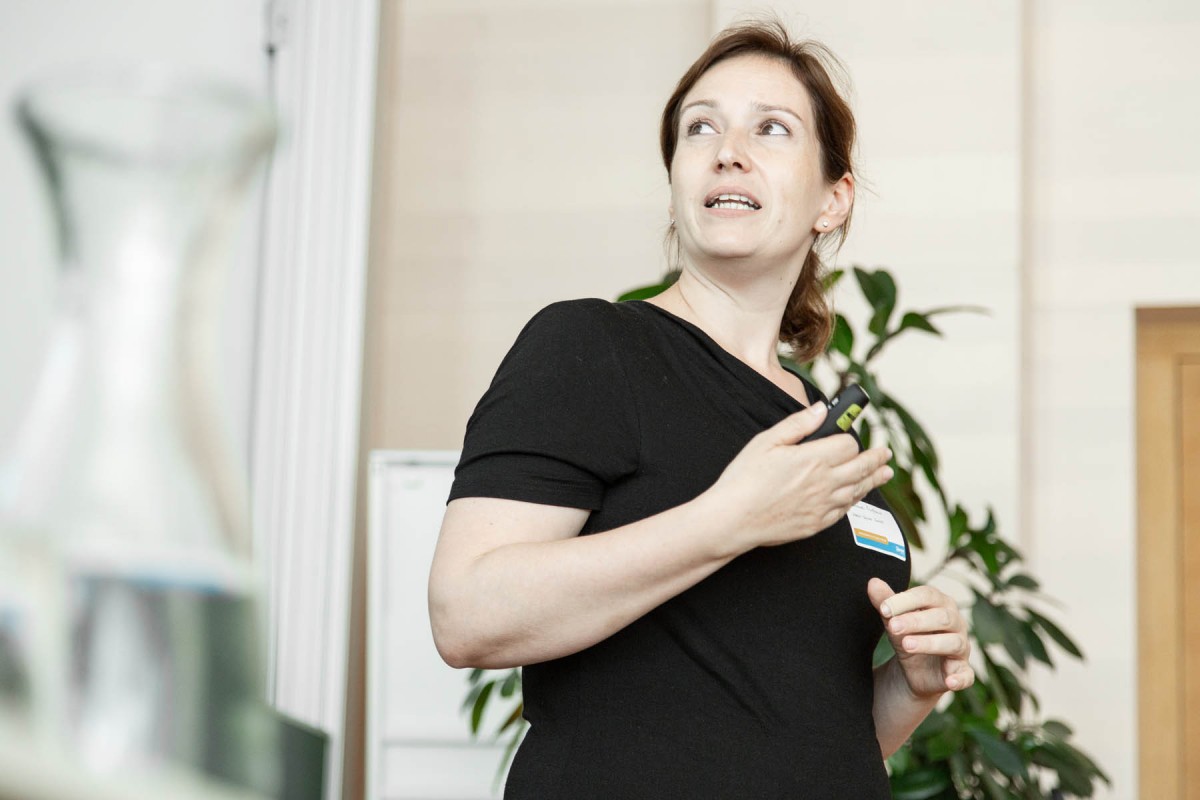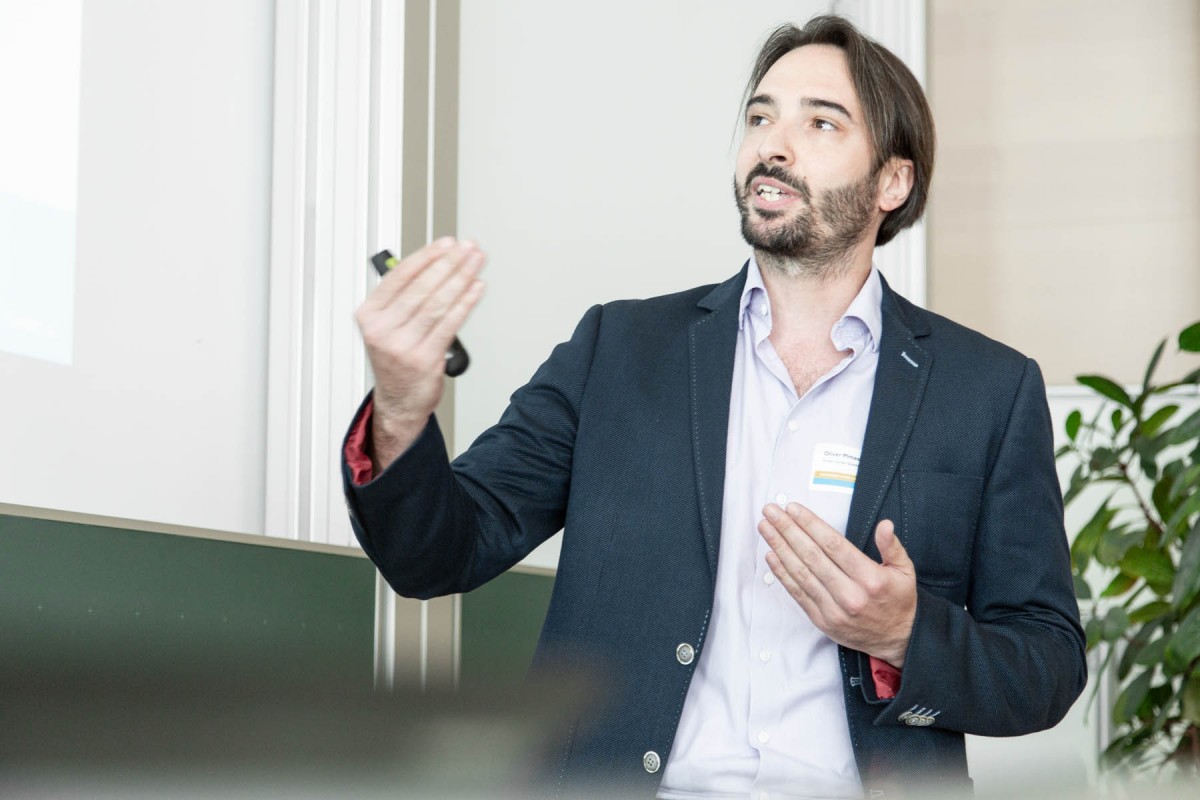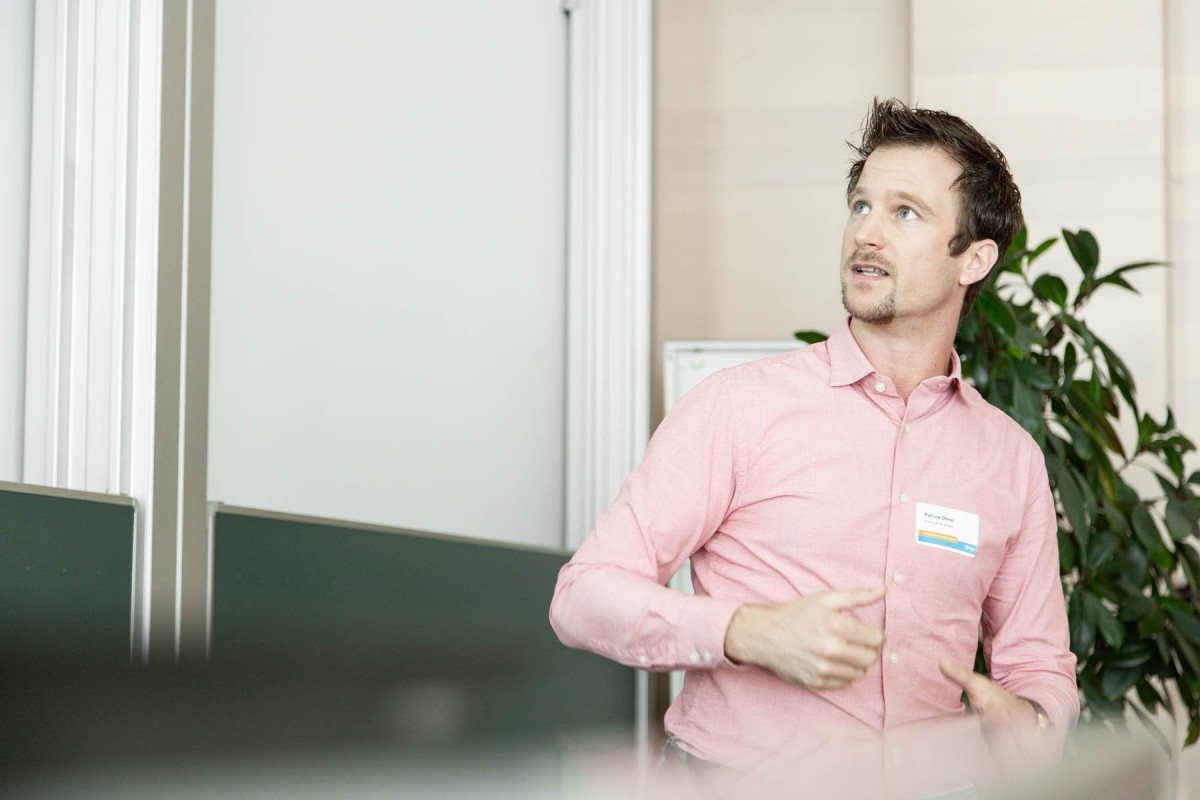On July 4th, the Know-Center invited its partners from Business and Science to the annual Data-driven Future Forum to inform about the current trends in Big Data and KI. In addition to a review of the first funding period and the successful funding commitment for the COMET modules, Stefanie Lindstaedt gave an insight into the projects for the current funding period until 2022. Subsequently, it became concrete: A Lighthouse Project with Magna Steyr and current topics from all areas of research that made Big Data and AI tangible.
How sought-after the topics Big Data and AI are for the domestic economy showed again this year the keen interest in the Data-driven Future Forum. The prelude was given by CEO Stefanie Lindstaedt: “As a COMET center, our most important task is to promote the transfer of research into the economy. Often it is a balancing act on a thin rope. As on the one hand, we want to conduct top-level research, on the other hand, of course, the impact for companies is also very important to us,” said Lindstaedt. For almost 20 years, the Know-Center has been supporting numerous companies in Germany and abroad with its data-driven technologies to generate real business value from their data.
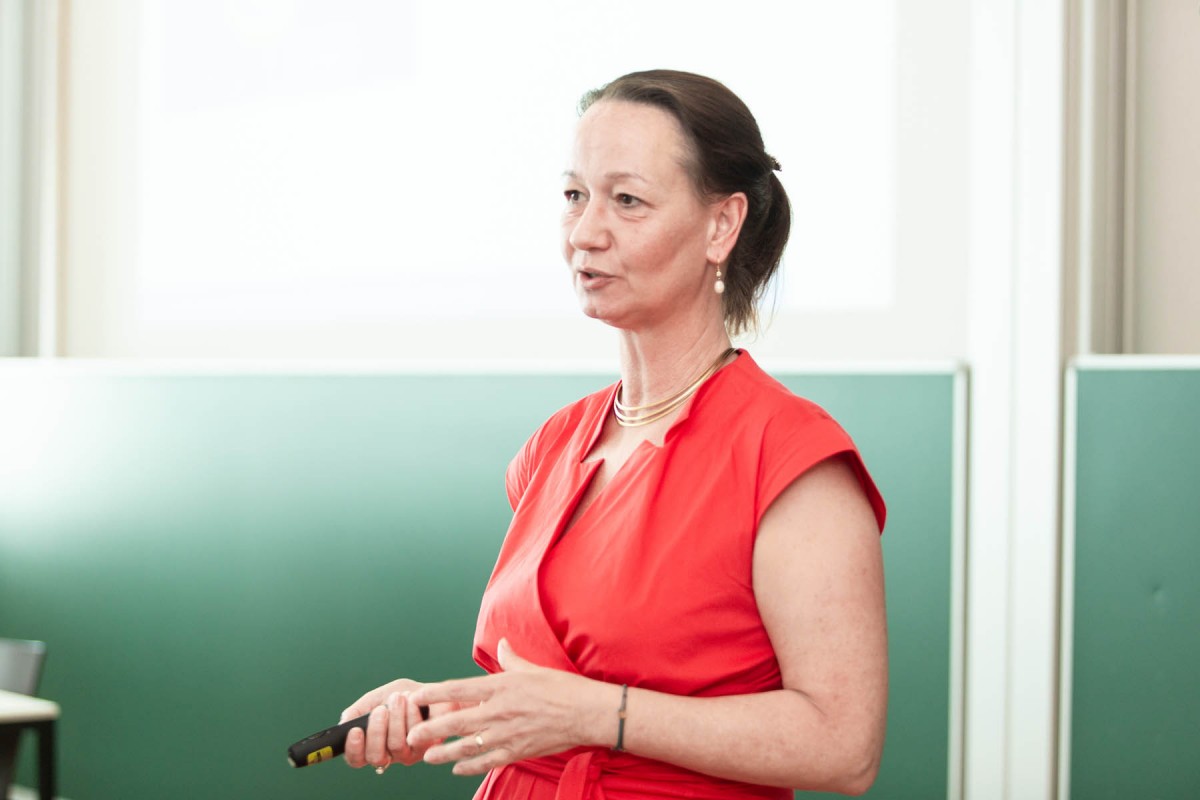
A big highlight of this year mentioned in advance in the Kleine Zeitung. “Styria pulled the biggest fuss on an important conveyor rail,” she wrote. “In the first assignment of the so-called Comet module, six modules were approved, five of them from Styria. The program is characterized by a high level of research competence and scientific connectivity, but at the same time has great relevance in the corporate sector. “One of the modules was approved by Know-Center and four million euros are available for four-year research projects. “In terms of content, we can thus take another new direction,” explained Lindstaedt. The DDAI (Data-Driven Artificial Intelligence) module focuses on the use of potentials in the field of Artificial Intelligence. “The goal is to make AI reliable and trustworthy,” says Lindstaedt. “Research is being done on a theoretical basis for secure AI algorithms that are explicable and verifiable.”
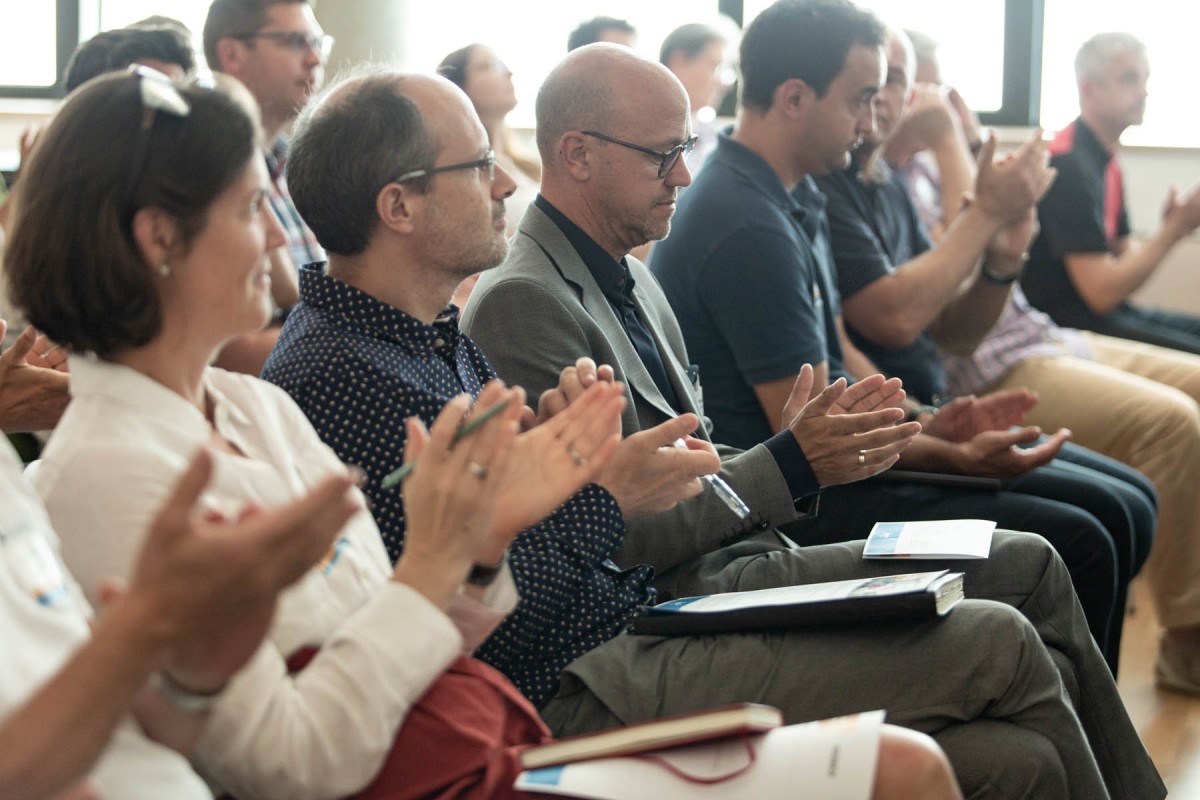
Another success of the past four years: In 2015, the Know-Center became a so-called World Class Center for Big Data and was awarded the BDVA label for this. 115 employees are employed at the Know-Center, and the research network comprises around 200 partners from over 30 countries. More than 800 projects have been successfully completed since 2001. In addition, it had managed to build important networks in the US and Asia. Lindstaedt said about the work on Austria’s most important contact point for Big Data research: “It’s about generating real business value through the right analysis of data, thus drawing companies’ attention to the enormous economic potential of Big Data. The most important question is: What can we concretely contribute to developing systems for harmonious and efficient human-machine interactions and to integrate them into the work processes?”
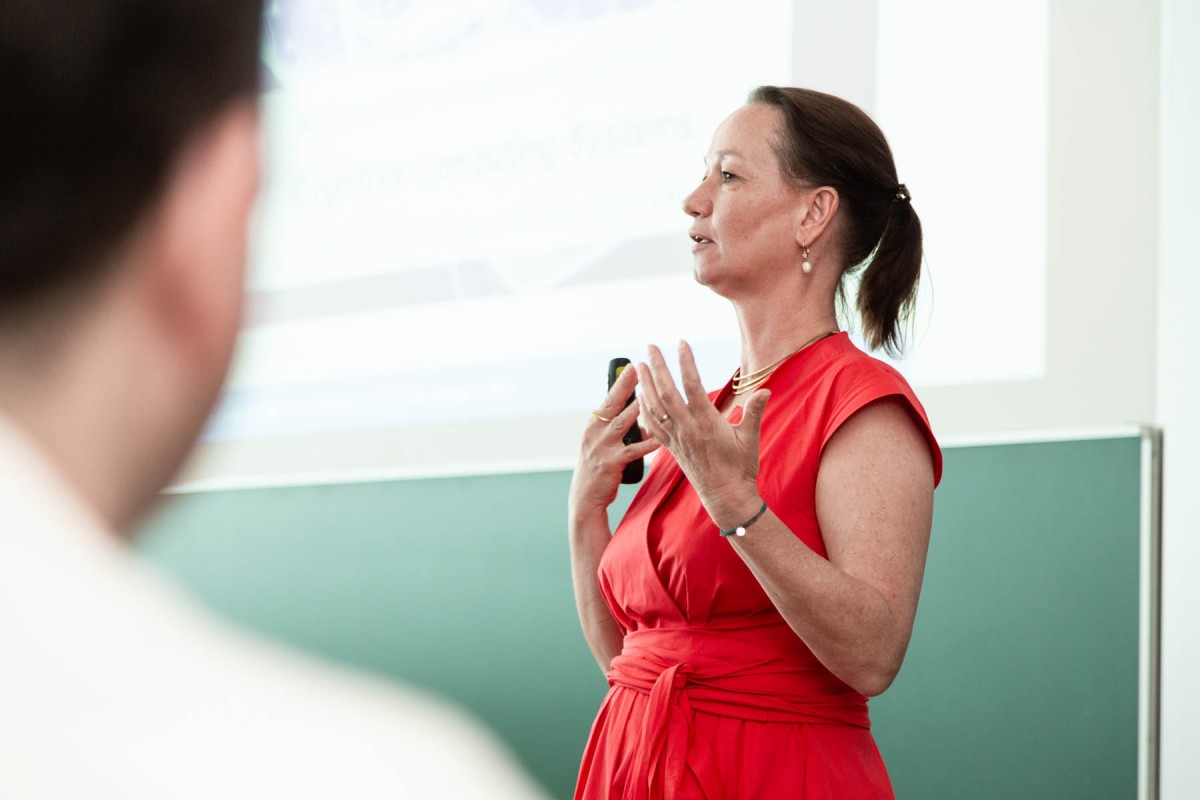
In order to make the research spectrum even broader, two new areas of work were established at the beginning of this year with the Areas Data Management and Data Security. The two division managers Stefan Mangard and Matthias Böhm are among the most renowned experts in their field. In addition, it had succeeded in significantly increasing the number of publications published by Know-Center experts, improving their quality and establishing many department heads as “next generation of Professors”, as Lindstaedt formulated it. Expressed in figures, this means 70 percent more publications compared to in the past four years. 200 percent more PhD degrees, 50 percent more national EU funding, and a whopping 214 percent more business partners.
And then another look into the future: The established Big Data Conference I-Know is coming back – in a somewhat modified form under the name AI Know. Specifically, internationally renowned AI experts are brought to Graz to inform a specialist audience about current trends in Artificial Intelligence.
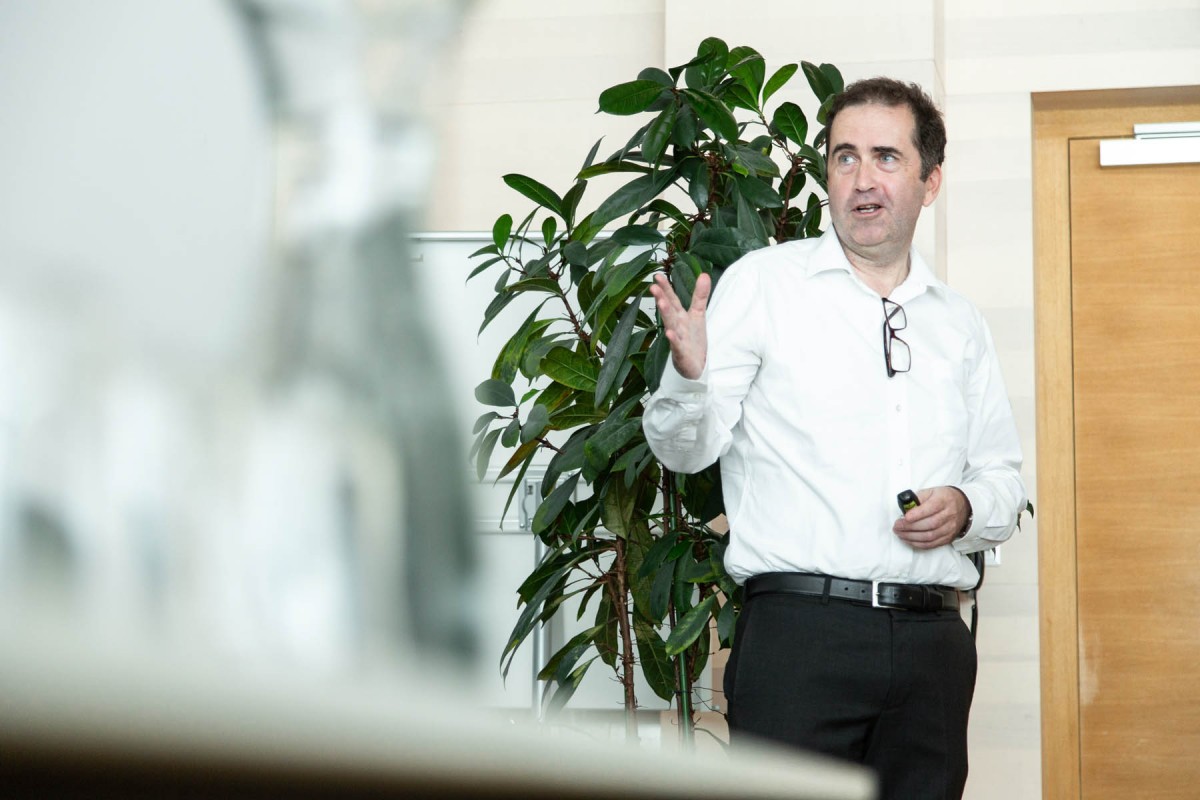
Lighthouse Project with Magna Steyr
In the second part of the event, Wolfgang Kienreich and Gerhard Grill-Kiefer from Magna Steyr presented the joint best-practice project Supply Chain Analytics. Delivery quantities were calculated at optimal total costs. The starting position: Competing goals in many different processes. “For large companies, there are a variety of tasks, in which different, often economically competing goals, are pursued,” explains Grill Kiefer. “These are in many cases not coordinated.
For example, purchasing focuses on large order quantities and low material costs. On the other hand, the material management is responsible for an economic stock and the supply of the highest level of production. “Transport costs are reduced by larger delivery quantities. The activities of materials management are strongly determined by the quantities delivered and the frequency of deliveries. So how do you deal with these conflicting goals to work more efficiently? How can they be placed under a common roof? First of all, the different logistics processes were presented in the joint project – taking into account mutual dependencies in the so-called Supply Chain. Then a mathematical model was developed to optimize competing targets. Results and input variables were visualized, decision-making processes supported with numbers, data and facts. On the one hand, the various areas such as purchasing, transport and warehouse were formally calculated. For the actual optimization of the processes, not only a plan simulation was created, but also to get the most out of it, historical comparative data were also used.
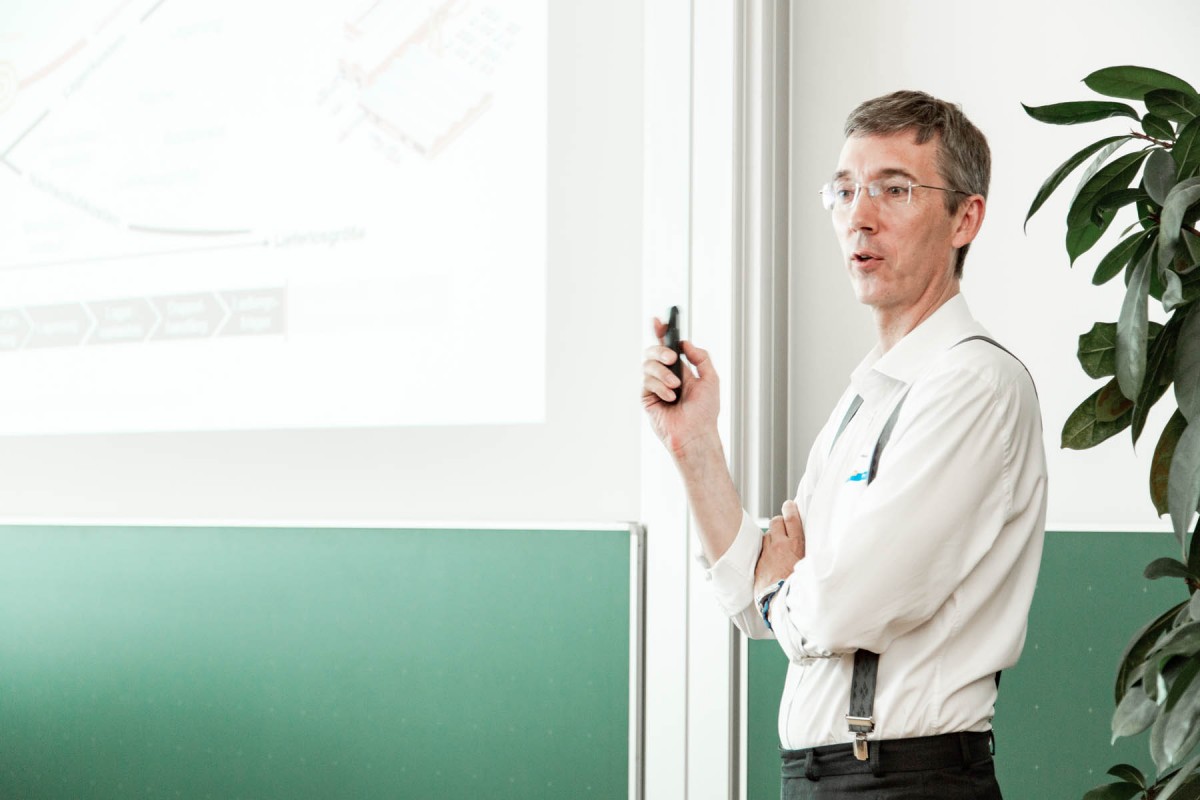
The shorter, the better: Three-Minute-Madnesses
In the third part, a so-called “Presi-Madness” was given. In other words, employees from a wide variety of research areas presented their teaser prestige projects in three-minute lectures, as usual in short pitches. The concept behind it: Afterwards (in the fourth part), the guests were able to decide by themselves in which area would they like to deepen their interests.
Irmtraud Wolfbauer presented some specializations in her field of research. “When we talk about Data-Driven Business, it’s about gathering more and more data to drive business value through increasing digitization in almost every business.”
According to Gerald Feichtinger, “Area Knowledge Discovery focuses on drilling a certain depth in data mountains in order to become aware of patterns as well as anomalies”. Main research areas are machine learning and e-learning. A popular topic is also the extraction of information from different texts. In the Social Computing Area, as the name implies, people are in the foreground. Recommenders connect employers with employees. On the one hand, entrepreneurs should find suitable candidates, on the other hand, it is about attracting jobseekers to exciting but above all, suitable jobs.
Patrick Ofner, who works for Area Data Security, initially defined the new area of research as linking various elements: “Our area is about linking data security with machine learning and data analytics,” he explained. He presented SAFE DEED as a best practice project. “Data is the most sought-after commodity today and is a high priority for companies. Our core message is that this value can be increased if companies share their data in order to exploit different expertise. It’s important that the shared data be encrypted using cryptographic methods so that one company can get the data of another, and that too not at an unreasonable advantage. “Belgin Mutlu of Area Knowledge Visualization then addressed the importance of visualizing data. Only with it one can be assured that the data analysis in different companies is also understood quickly.”
